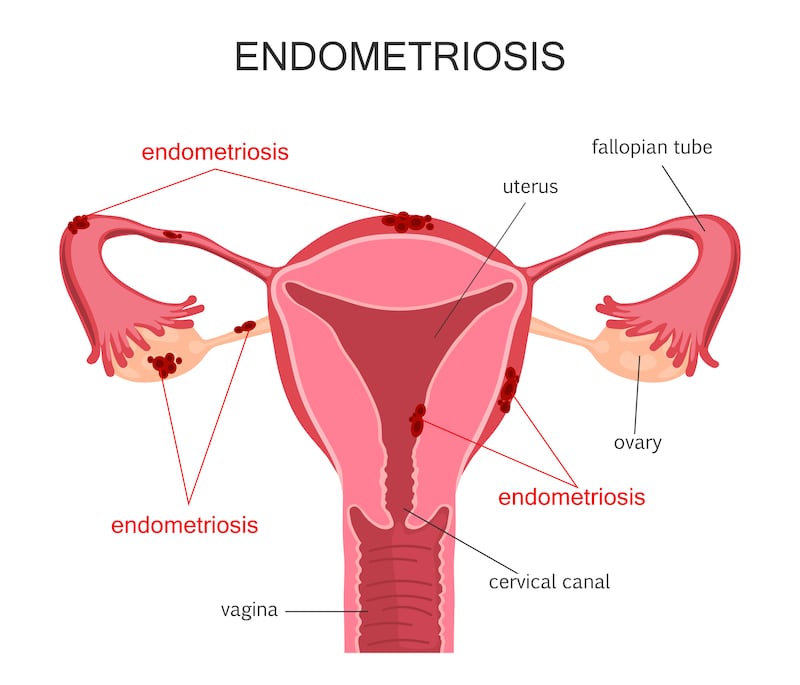What is the condition?
Endometriosis is a debilitating gynaecological disease where tissue, similar to the lining of the womb (uterus), grows in other parts of the body. In most cases it grows in the pelvic region, including on the ovaries, fallopian tubes and around the pelvic cavity. It can also affect nearby organs like the bladder and bowel, and cause ovarian cysts. Less commonly, it can spread to other areas of the body.
There is no cure. However, treatment is usually aimed at controlling symptoms, which can include severe, life-impacting pain during periods, sexual intercourse, bowel movements and/or urination. Patients with the disease often have chronic pelvic pain, abdominal bloating, nausea, fatigue and sometimes depression, anxiety and infertility.
How many people live with endometriosis?
The World Health Organisation (WHO) estimates that endometriosis affects roughly 10 per cent of women and girls of reproductive age globally. Patients and advocacy groups believe the true prevalence is much higher.
There is no known way to prevent or cure endometriosis, but the WHO says early diagnosis “may slow or halt the natural progression of the disease”. According to the HSE, it is a “difficult condition to diagnose and treat because of the variation of presentations, impacting the physical and mental wellbeing of patients at varying levels”.
RM Block

The time it takes to diagnose the condition varies due to its “varying and ambiguous symptoms”. However, the Dáil heard in May that it can take nine years to get a diagnosis.
[ Life with endometriosis: ‘I’ve been branded a hypochondriac so many times’Opens in new window ]
Women are often required to undergo a laparoscopy – where a surgeon passes a thin tube through a small cut in a person’s stomach – to get a definitive diagnosis.
What is treatment like in Ireland?
Women are often prescribed hormonal contraceptives to treat the symptoms. The pill is prescribed most often in the first instance, with many women later having a hormonal contraceptive coil implanted into their uterus. Some women undergo keyhole surgery to remove patches of endometriosis tissue via ablation, whereby the tissue is “burned away”, or through excision, where it is cut out.
Due to waiting times or complexity of cases, some women have opted to travel abroad for excision surgery for endometriosis, either funded through private health insurance, their own means or crowdsourced funding.
[ Teenager forced to use walker, wheelchair because of endometriosis painOpens in new window ]
No person has received such surgery abroad under the HSE’s Treatment Abroad scheme, according to a spokesman, but some women may have availed of such care under the Cross Border Directive, which does not record information on the type of treatment sought. A spokesperson for the VHI said the insurer approves an average of 10 “treatment abroad applications” per year for endometriosis surgery not available in Ireland.
In 2023, then-minister for health Stephen Donnelly announced the development of the national endometriosis framework, which, when published, will set out for the first time a defined clinical care pathway. It proposes operating on a “presumed diagnosis”, meaning women with symptoms will be treated under the assumption they have the condition, without the need for a surgical diagnosis.
Two supra-regional complex endometriosis services have been set up, in Tallaght University Hospital and Cork University Maternity Hospital. They are supported by a network of five endometriosis hubs around the country. However, it was reported in this newspaper in June that half of the funded staff posts at these centres are currently unfilled.
Sinn Féin is due to bring forward a motion in the Dáil later this month calling for improved services for endometriosis diagnosis and treatment. The party has been holding public meetings on the issue across the country over recent weeks.

















